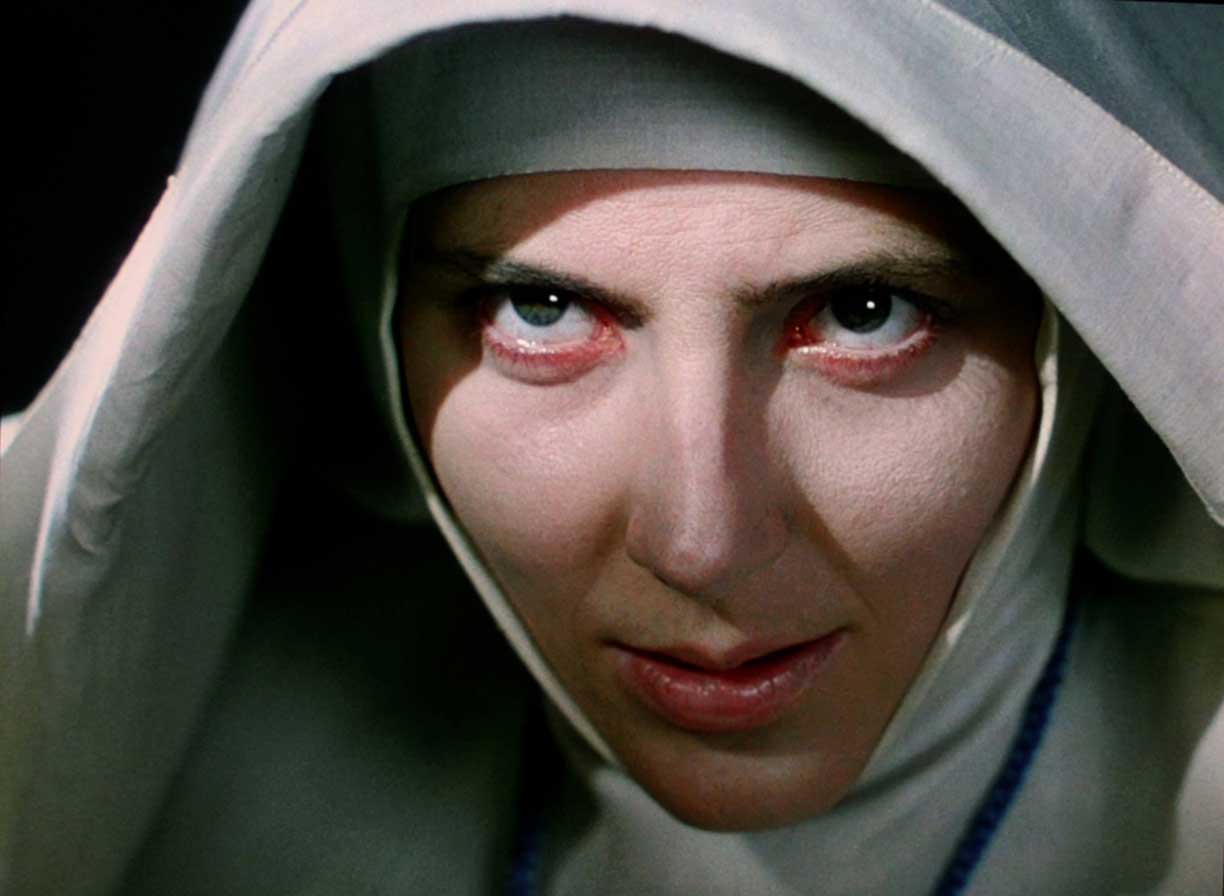
Many years ago in the introduction to her book of capsule reviews, 5001 Nights at the Movies, the noted film critic Pauline Kael rendered one of her (numerous) opinionated opinions by stating that anyone seeing a film on television, whether it be a live broadcast or via video, was committing a cultural crime with themselves being the victim.
OK, in a perfect world she would be quite right. Films are, or were, certainly, made to be seen on big screens with a lot of people reacting at once for a communal, epic experience.
If one settles for new, mostly commercial films, it’s still easy to have that (though the movie theaters of the present day aren’t designed on an epic scale), but, if one is interested in vintage, international, or documentary films, the pickings may be slim indeed, and then only if one lives in the right place (large cities, especially ones with an academic bent, are best). More and more (and this was true even in Kael’s day, though an insular and culturally elite New Yorker might not have known it) video is what keeps a lot of cinema history alive.
Actually, video/streaming has done a bit more than just kept films and their history alive. There have been more restorations and/or refurbishments of notable films in the decades since home video/streaming has been in existence than ever before. Why, one might ask? Well there is a cultural, artistic interest (though, admittedly, a niche one, commercially speaking), and that feeds the real reason, which is financial.
With the advent of video and streaming platforms, older films now have newer ways to again make money. One thing which became more and more apparent when the video revolution began to take wing, especially when higher quality visual and audio formats from laser disc through blu-ray and HD broadcasts came into being, is that older films simply couldn’t be presented in the worn-out, battered prints which were too often the norm when they were shown on television or repertory theaters, the chief venues for such films before the advent of video.
Added into this mix was a new interest in film history, often involving the stories of talented, often ahead of their time, film makers who saw many, if not most, of their films butchered and/or thrown away by short sighted studio hierarchy and/or also ignored by a public which didn’t “get them” at the time.
Well, everybody loves a comeback story and vintage film fans/students love to see old wrongs righted and too ahead of the curve films be recognized (which also helps this group to feel that they have been smart enough to embrace these fine works and make them their own, fostering a sense of involvement). Whatever the attitude or circumstances it took, the bottom line is that this is all to the good in helping to preserve and champion good, too often overlooked, work.
Admittedly, not all older films and film makers are equal. Some people’s work and some films are just maintained for nostalgia/cultural reference reasons. Others, however, maintain a vibrancy and artistic pulse which speaks to newer generations.
This article seeks to celebrate these artists and their films, which have happily been given a second chance through the channels of new mediums. Sad to say, all of this comes mostly too late to help, well, mostly deceased film makers (who mostly didn’t even live to see the restorations/refurbishments of their works). However, posterity gets to see and judge and, hopefully, enjoy, these works in their best conditions ever. There is some justice in the world.
1. Orson Welles
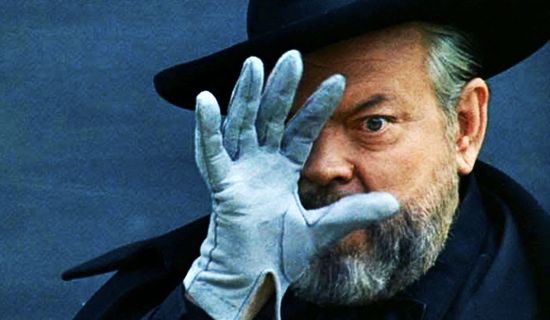
One is tempted to reference Welles frequent and much quoted comment (and bitter joke) about starting at the top and working the way down. This can’t be since there many more good film makers to come but there is a great case for Welles being not only one of the finest of the lot but also for being one who may well have benefitted the most from the video era.
Anyone who knows the quite colorful and rather checkered history of Welles career knows that most of his films were released in versions not to their creator’s liking. Sadly, many of them were also barely released to the point where they could build an audience in their own times. Too many think of Welles as the man who made 1941’s monumental Citizen Kane and then….? Thankfully, the video era is correcting that.
While the possibility of finding the legendary lost footage of 1942’s The Magnificent Ambersons looks to be nil, the distinguished Criterion Collection created a stunning, extras-laden version during the laser era and, at the time of this article’s writing, have announced that the film will be given similar DVD/blu-ray treatment.
Even better, MCA/Universal allowed a mighty group of heavy hitters, notably the great sound designer Walter Murch, critic/historian Jonathan Rosenbaum, and producer Rick Smidlin, to be allowed to re-edit and rejigger 1958’s Touch of Evil to something like Welles original conception (and get it to a way bigger audience than Universal gave it a chance to reach). The results were stupendous.
This prompted Criterion, which had already released a similarly revamped version of 1951’s Othello (and has since discovered Welles preferred European version of that film), to create similarly ambitious projects for 1956’s problematic Mr. Arkadin (now the best it can be) and 1966’s Chimes at Midnight, a masterpiece blighted by budgetary difficulties. Now, in Criterion’s new version, those technical problems have been solved and the film looks and, more importantly, sounds as Welles wished.
However, the capper comes by way of the streaming giant Netflix, which has managed to break the nearly five decade old obstacles blocking the completion and release of Welles’ final work, The Other Side of the Wind, which is opening to incredible reviews at the time of this writing. They also commissioned a companion documentary whose title is taken from another Welles saying/prophecy: They’ll Love Me When I’m Dead. Once more, right on the money.
2. Hershell Gordon Lewis
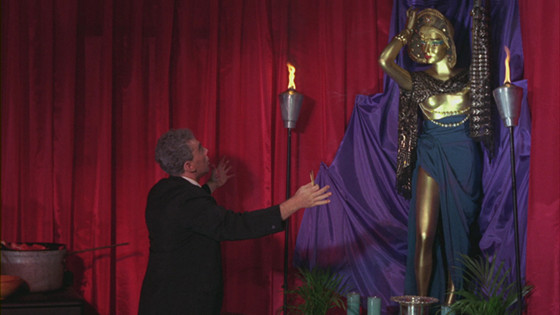
From the sublime straight to the ridiculous. Unless the powers that be at Criterion lose their minds and/or have another Valley of the Dolls moment where something completely lacking in artistry becomes a sort of art form of its own, the works of Hershell Gordon Lewis will not be in the fold (though, oddly enough, the works of his biggest fan, trash-maestro John Waters, are more than welcome).
Some reading this, especially those who dote on the kind of quality cinema represented by most of the other film makers on this list, may not be familiar with Lewis and his work (which provides a clue as to why video has enriched his reputation).
Despite being a highly educated man (one with several lofty degrees and who taught on the university level!), Lewis is infamous for making the lowest and basest of grind-house films created during the pre-slasher film, pre-ratings code era.
In a time which largely still pitched films to the family trade, such mini-epics of sexuality and, especially, violence as Blood Feast (1963), Two Thousand Maniacs (1964), and Color Me Blood Red (1965), along with such sexploitation fare as Goldilocks and the Three Bares (1963) and How to Make a Doll (1967), along with such outliers as The Magic Land of Mother Goose (!), also in 1967, weren’t going to be admitted to be noticed (in public, anyway) by “nice” people.
Though he made a brief comeback, at an advanced age in 2009, mostly thanks to the new fans home video had brought him, he only actually spent one decade (from the early 1960s to the early 1970s) making films. However, he accumulated nearly 40 films to his credit during that time, and did virtually everything on those films, except act (and that included writing the theme song and singing it on the soundtrack of Two Thousand Maniacs, an extremely twisted rip-off of the classic stage musical Brigadoon).
By all account, he was also a dynamic whiz at promotion and had to be, for his films weren’t going to be shown in the same theaters displaying Lawrence of Arabia, Mary Poppins or Oliver! His was what might be termed “subterranean cinema”, way out of the mainstream.
Video has not brought notable restorations or distinguished critical editions to Lewis but it has done things that it does so well: it has preserved his work (which might by now literally have disappeared into the ether for it was once quite hard to see any of his neglected films) and presented it to a new, much wider, audience. Does such fare deserve it? Well, why not in an age of so many choices?
3. Josef Von Sternberg
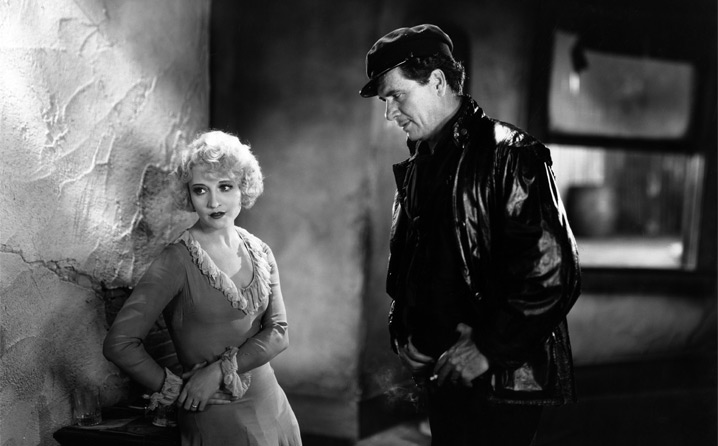
Von Sternberg had an odd career, so it’s not surprising that his is a unique entry on this list. He had come into his own in the late silent era with such memorable films as Underworld (1927), The Last Command and the superlative The Docks of New York (both 1928).
To many, though, he has been best remembered for his seven film cycle with his great discovery, the now legendary actress/singer Marlene Dietrich. They made films over a most turbulent half decade and ended their time with two big box office bombs (1934’s The Scarlet Empress and 1935’s The Devil is a Woman, which had major trouble from Spain’s then fascist government). Those failures damaged her career and, even more sadly, virtually ended his.
After a very limited contract with then-lowly Columbia Pictures, he only made films very sporadically (and his volatile temperament certainly didn’t help). Sadly, though there were a number of critical appreciations over the years (and he did live to see some critical restoration of his reputation before his death in 1969) he was often treated like “damaged goods”. Also, von Sternberg’s work had a few peculiar handicaps which had prevented his films from being better known. One was availability.
His best works were done for Paramount Pictures, which sold the vast majority of its pre-1948 talkie library to MCA/Universal in 1958, and which also expressed very little interest in its silent output for years (and, in fact, had many of its silent films destroyed for storage purposes). It was if the fates had conspired to put his films in the hands of the two companies existing in Hollywood most indifferent to their vintage catalogs.
In fairness to MCA, they did try to release the Dietrich films on VHS, laser, and in sort of cut-down DVD versions (the kind of packages which cram many films into a few discs with no extras). This leads to the second and more serious problem in seeing Sternberg’s work. He has always been cited as one of the masters of light and shadow in black and white film (and was a cinematographer in his own right).
In fact, he often claimed that his films only had stories in order to have a peg on which to display his chiaroscuro tableaux (and to enable him to express his sophisticated, ironic, and very nihilistic attitude). Unless Von Sternberg’s works are seen under the most optimal conditions, they don’t really work. VHS was not the medium for them and they were all big commercial disappointments in that medium. The films never made a dent, really, in the more suitable laser market but started to catch on in the more advanced Blu-ray era.
In 2018, Criterion released a much acclaimed multi-disc set of the Dietrich Hollywood films, proclaimed as the first presentation to do them justice. This left out the Berlin-shot film which started their collaboration, 1930’s The Blue Angel, long thought to be their true masterpiece, but, thankfully, that art-house classic has never suffered from a shortage of good video additions. However, the element of von Sternberg works which has really benefitted from the presence on home video of his surviving silent works are his silent films.
For too many years his silent work was dismissed as a warm up to his Dietrich years but the video presentations of, especially, The Last Command and The Docks of New York (which was swept aside during the rush to sound), show that the silent era might well have been his greatest period (and both are now starting to be considered to be among the very best of that time).
Though some also want to claim greatness for such peculiar later efforts as 1941’s The Shanghai Gesture and his swan song, 1953’s The Saga of Anathan (the big-budget Jet Pilot bears a 1957 date but was actually kept in the editing room for seven years by producer Howard Hughes!) , the silent and Dietrich films are the treasures and the beautiful video versions of these long neglected films may have revealed the true artist.
4. John Cassavetes
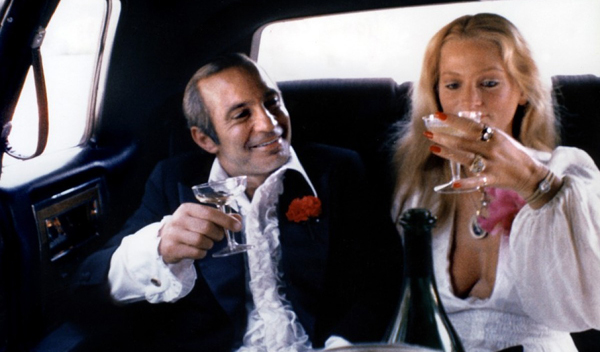
Several of the elements present in the stories of the artists already discussed are certainly present in the story of John Cassavetes as a film maker. Cassavetes was first known to the film industry as an actor of the method school and showed a lot of promise, if not as a leading man/star, then as a suave villain (as witnessed by his most famous acting roles, his Oscar nominated turn as a sex criminal turned commando in 1966’s The Dirty Dozen and the duplicitous husband who commits the ultimate betrayal in 1968’s Rosemary’s Baby).
However, almost from the time that he started as an actor in films, he was trying to become a total film maker, writing, directing, producing..and only acting when necessary. He also wanted to by-pass all the slick tropes of Hollywood film making and create a gritty and realistic, almost documentary, style (very often improvised in long rehearsal sessions, not on camera, as many still believe). The studios weren’t having any of it (and his few attempts to try to be mainstream didn’t please him on anyone else).
He always had to finance his own productions starting with 1961’s Shadows and his big breakthrough, 1968’s Faces, largely shot in his own home. Theaters still showing mostly the glossy products of the Hollywood system weren’t about to touch these films and they were rough for even the art house circuit. He did have something of a commercial breakthrough with 1974’s A Woman Under the Influence, but even that wasn’t seen by vast multitudes.
Such later films as Opening Night (1977) and the truly unfortunate The Killing of a Chinese Bookie (1976, both edits) were virtually abandoned upon release. Though Cassavetes reputation remained high among cineaste, his films were actually little seen after whatever original releases they may individually have had. This problem was compounded by his death in 1989 at the too young age of 60.
Thankfully, his legacy was put in the hands of his family, principally his wife, star actress and incredible muse, Gena Rowlands. She did her homework and, as she said to an interviewer, partnered with Criterion, a company she described as having “a reputation”‘.
Though his later, thankfully uncompromised, attempts to work with a major studio (1970’s much maligned Husbands, 1980’s box office success Gloria), save for his last, overlooked, film 1984’s Love Streams weren’t included, all of his magical indie films of his prime period were and all given excellent, instructive extras. Happily, even the non-included films have found homes on video and streaming. Keeping in mind the director’s iconoclastic reputation, who can say that he would be happy to have his films life on via video/TV but better that way, to influence future generations, than not at all.
5. F.W. Murnau

It’s a true shame that the idea of film preservation took hold so many decades after a great many films could have been saved were lost. There may be no greater historical film tragedy than that of F.W. Murnau, perhaps the greatest film maker of Germany’s staggering platinum silent era and, after he came to Hollywood for the brief remainder of his life, one of the greats there as well.
Murnau’s life was cut short at 42 by an auto accident just as sound was coming in (and the last few films he made were released so late in the silent era that they contained musical soundtracks and sound effects).
Of his 21 films, only nine survive. Barring a miracle, no one now living will be seeing his Jekyll/Hyde film Der Januskopf (1920) or his much desired Hollywood production 4 Devils (1928) but, happily, the nine which do survive are major productions and have been presented to modern viewers in fine video versions.
Thanks to the fine work of British and US companies, such as Kino, landmarks such as the unforgettable The Last Laugh (1924) and Faust (1926), not to mention Murnau’s most famous film, his Dracula, 1922’s Nosferatu (ironically, once ordered destroyed by legal injunction!) are now widely available in the best restored prints in which they have been shown in decades.
Even better, Twentieth Century Fox, not a company which has plumed its vaults back past a certain point, rendered a superb version of the director’s famed but too little seen masterpiece, Sunrise (1927), along with the excellent City Girl (1930), a film swept aside by the coming of sound (and which was compromised by the studio but is still quite worthy). This led to the exhumation of his last great film, the poetic South Seas semi-documentary Tabu (1931). To quote a Spencer Tracy line, there’s not much there but what is there is choice.